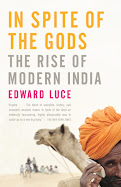RECIPE FOR SAVING THE BOTTOM BILLION:
MIX 1 PART PHILANTHROCAPITALISM & 2 PARTS..
The Bottom Billion by Paul Collier brings to attention the forgotten citizens of the world who reside in 5/6 of the world population classified as developing countries. The bottom billion are impoverished and live in resource-poor nations, where conventional development strategies have failed. Collier identifies how the bottom billion have come to be and aims to propose solutions outside of the failing methods in place today.
One book focuses on the external fight for the poorest world citizens,based on the resources being transferred in, while the other speaks from within that destitute realm, conceivably providing a more intimate analysis of the resource management post-transfer. In my analysis, I hope to extort the assumptions and disparities in their evaluation of the issues plaguing developing countries and to perhaps arrive at comprehensive solutions.
Like my review of Thomas Friedman's The World is Flat, I intend to post my reviews in several parts.
Part 1
I was thoroughly excited to begin the reading and especially to hear Matthew Bishop and Michael Green outline just how the rich could save the world. According to Bishop & Green, philanthrocapitalists are different from their precedents in that they give in ways that utilize the benefits of a capitalist society, in order to give a gift that keeps on giving. They have amassed their fortunes, large and small, and now can leverage various factors which they enjoy as a result of their success. Today, philanthropists and celanthropists are giving to myriad causes, and Bishop & Green discuss the possibility of measuring the true effect of the generosity.
Consistently throughout the book, philanthropists of the 21 st century are compared to those of previous ones, such as Andre Carnegie and Andrew Mellon. One particular subject that is germane to any period of philanthropy is the arts. Admittedly, most of the major artistic institutions of our era are the direct result of the contribution of a generous philanthropist, and without them, our education would be lacking. Briefly, Bishop & Green question the necessity for philanthropic contributions to subjects such as the arts, during the simultaneous demise or larger social establishments such as public schooling. This is an issue that was under-emphasized in the book especially given the large donations quoted as having been assigned to artistic causes. One of the endowments of democracy is the freedom to do whatever one wishes with their money, however in times of widespread economic disaster, whether in our nation or abroad, philanthropists should be encouraged to donate to those causes which protect and prolong the most worthy cause of all- basic human life.
Here the two authors could have performed a theoretical comparison of the effects that donation to the arts versus to famine for example, has on human life. In the long run, the arts are indeed an important part of life, but it can be objectively argued that in the short run, one is more important or at least productive than the other. For instance, a $200,000 donation may purchase one work of art for a museum, which will then have to attract patrons to its gallery, who over time will develop an appreciation for the work and its artists. At the same time, the same amount of money could be used to provide groceries to several poverty-stricken families for an entire year and furthermore, the advantage of a favorable exchange rate can be used to multiply the benefits to a disadvantaged in developing countries. If the goal is to describe ‘how the rich can save the world’ one effective method would have been to highlight the most productive expenditures from philanthropy.
Bishop & Green’s “Philanthrocapitalism” comes at a timely juncture in relation to the increasing harvest of the seeds of capitalism and heightened necessity for dynamic philanthropy. Dynamic philanthropy is different from traditional giving in that it takes advantage of valuable economic, political and social situations in order to maximize or at least attempt to maximize, the rewards of donation. In fact, this book would have relevant during the late 90’s when many young millionaires were made almost overnight in the glossy skyscrapers of Silicon Valley. There is a marked difference in the significance that this book would have had shortly following the dot com boom(before the bust) and the past four to five years , encompassing the period during which the book was written. The variance is the fact that in the time since then, globalization has flattened the world, exposing more global citizens to capitalism and democracy. As a result, philanthropy can now be transformed into philanthrocapitalism and globalization can serve as the platform through which philanthropists can be reached and their donations can be mobilized.
The global community is constantly changing in social, political and economic aspects, but the one trend that seems to be increasingly popular is the trend towards capitalism, albeit on different levels. Therefore, not only is the discussion in this book relevant today, it is pertinent to future philanthropists residing throughout the global community.
More on Mathew Bishop, Michael Green and Philanthrocapitalism
Paul Collier
TBC...








No comments:
Post a Comment